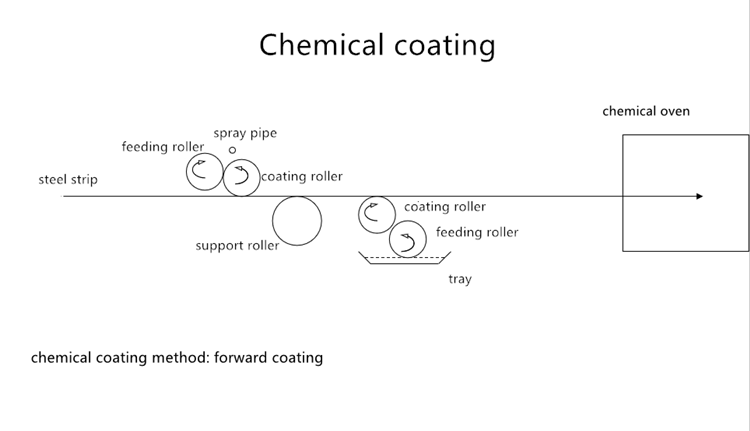The function and precautions of chemical coating in color coating production line
Chemical coating generally uses a roller coating method, so that the passivation solution (chromate chemical pretreatment solution) forms a network structure organic film layer (chemical conversion film) with -Cr6 + -Cr3 + as the basic skeleton on the surface of the substrate. The network structure of the chemical conversion film increases the durability, acid and alkali resistance, and corrosion resistance of the coating, and increases the adhesion between the substrate and the coating. At the same time, the chemical conversion film prevents the reactive metal zinc (aluminum) from reacting with the base material in the coating to form zinc soap, which damages the bonding force between the zinc layer and the coating; on the other hand, it also increases the surface roughness and increases the coating Contact surface and adhesion to the substrate surface.

During the use of the passivation solution, some impurities are inevitably mixed in. These impurities become crystal nuclei, which will accelerate the formation of crystals in the chemical coating solution. The crystal grains stay on the roller surface of the chemical coating machine to cause voids in the passive film, resulting in coating Fine dots appear.

